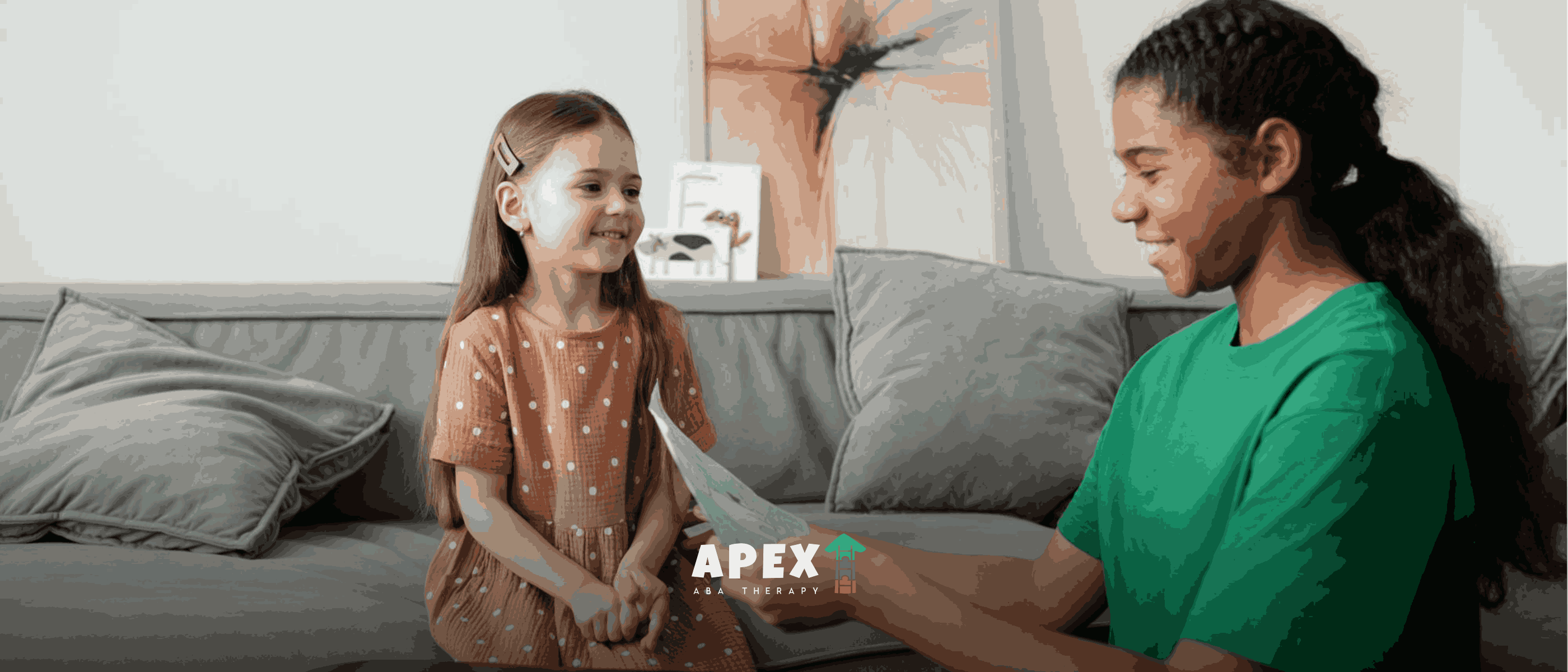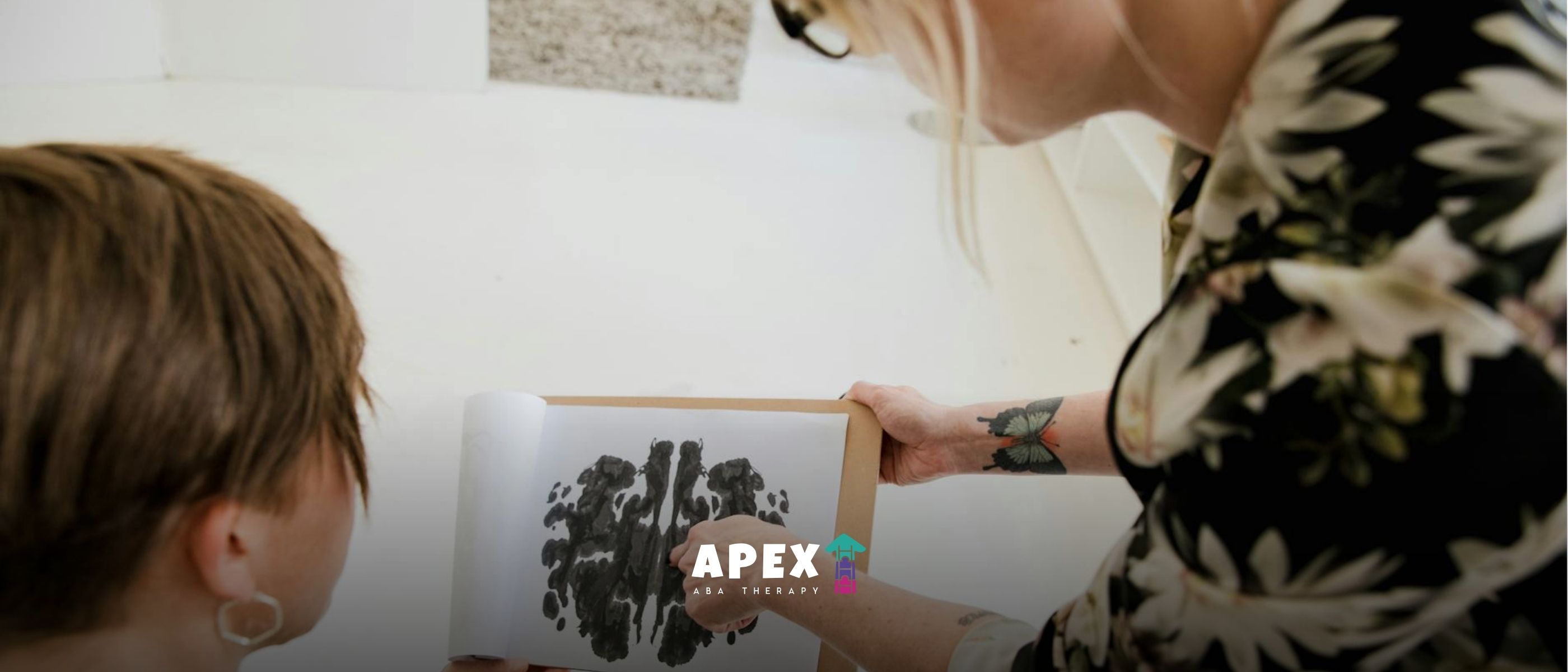Autism Sensory Overload & Overstimulation
ASD often causes sensory processing issues, leading to overload or overstimulation. This can cause significant distress or pain.
.jpg)
Autism Sensory Overload & Overstimulation
Understanding Autism and Overstimulation
To comprehend the challenges faced by individuals with autism in relation to overstimulation, it is essential to have a clear understanding of autism itself and how it can lead to sensory overload and overstimulation.

What is Autism?
Autism, also known as Autism Spectrum Disorder (ASD), is a neurodevelopmental condition that affects an individual's social interaction, communication skills, and behavior. It is a spectrum disorder, meaning that the characteristics and severity of symptoms can vary greatly from person to person.
Individuals with autism may have difficulty with social interactions, exhibit repetitive behaviors or restricted interests, and experience challenges in verbal and non-verbal communication. Autism can also impact sensory processing, leading to heightened sensitivity or hypo-reactivity to sensory stimuli.
Sensory Overload and Overstimulation in Autism
Sensory overload occurs when an individual with autism experiences an overwhelming amount of sensory information that their brain struggles to process. This can happen due to various sensory stimuli, such as loud noises, bright lights, strong smells, or crowded environments. The excess sensory input can lead to overstimulation.
Overstimulation can manifest in different ways, but it often results in feelings of anxiety, irritability, or being overwhelmed. It can also trigger a range of physical and behavioral reactions. Understanding the signs and symptoms of overstimulation is crucial in providing appropriate support and intervention for individuals with autism.
By recognizing the challenges faced by individuals with autism and understanding the impact of sensory overload and overstimulation, we can explore effective coping strategies and create a sensory-friendly environment that promotes their well-being. In the following sections, we will delve deeper into the signs and symptoms of overstimulation, explore common triggers, and provide strategies to cope with and support individuals experiencing overstimulation.

Signs and Symptoms of Overstimulation
Overstimulation can be a challenging experience for individuals with autism, leading to a range of behavioral and physical signs. Recognizing these signs is crucial in identifying when someone may be experiencing sensory overload and overstimulation.
Behavioral Signs
Behavioral signs of overstimulation in individuals with autism may vary depending on the person and the specific situation. Some common behavioral signs include:
- Meltdowns or tantrums: When overwhelmed by sensory input, individuals may have difficulty regulating their emotions, leading to meltdowns or tantrums.
- Withdrawal or avoidance: Some individuals may withdraw or avoid certain environments or situations that they find overwhelming.
- Aggression or self-injurious behavior: In extreme cases, overstimulation can lead to aggressive behavior towards others or self-injurious behaviors as a way to cope with the overwhelming sensory input.
- Repetitive behaviors: Engaging in repetitive behaviors such as rocking, stimming, or vocalizations may be a way for individuals to self-soothe and cope with overstimulation.
It's important to note that these behavioral signs can vary in intensity and duration, depending on the individual and their unique sensory processing challenges. Understanding these signs can help parents, caregivers, and professionals provide the necessary support and interventions.
Physical Signs
Physical signs of overstimulation in individuals with autism can manifest in various ways. These signs may include:
- Heightened sensitivity to sensory input: Individuals may display heightened sensitivity to certain sensory stimuli, such as bright lights, loud noises, or certain textures.
- Covering ears or eyes: When overwhelmed by sensory input, individuals may cover their ears or eyes as a way to reduce the impact of the stimuli.
- Physical discomfort: Overstimulation can lead to physical discomfort, such as headaches, dizziness, or an upset stomach.
- Changes in breathing and heart rate: Some individuals may experience changes in their breathing pattern or heart rate when exposed to overwhelming sensory input.
It's important to remember that physical signs can vary among individuals and may not be present in every case of overstimulation. Being observant and understanding an individual's unique sensory processing challenges can help identify these physical signs.
By recognizing the signs and symptoms of overstimulation, individuals with autism and their caregivers can take proactive steps to manage and alleviate the effects of sensory overload. Implementing strategies and creating a sensory-friendly environment can greatly improve the overall well-being and quality of life for individuals on the autism spectrum.
Triggers for Overstimulation
Understanding the triggers for overstimulation is crucial in effectively managing sensory overload in individuals with autism. These triggers can be categorized into sensory triggers and environmental triggers.
Sensory Triggers
Sensory triggers refer to stimuli that directly affect the senses and can lead to overstimulation in individuals with autism. These triggers can vary from person to person, as everyone has different sensory sensitivities. Common sensory triggers include:
- Loud noises: Sudden loud sounds, such as alarms or crowded environments, can be overwhelming for individuals with autism.
- Bright lights: Intense or flickering lights, such as fluorescent lighting or strobe lights, can be distressing for those with sensory sensitivities.
- Strong smells: Certain smells, such as perfumes, cleaning agents, or strong cooking odors, may be overpowering and cause discomfort.
- Tactile sensations: Some individuals may be hypersensitive to certain textures or clothing materials, leading to discomfort or distress.
- Taste and food textures: Certain tastes or textures of food may be aversive to individuals with autism, causing sensory discomfort during meal times.
It's important to note that these sensory triggers can vary in intensity and impact from person to person. Identifying and understanding an individual's specific sensory sensitivities can help in developing effective coping strategies.
Environmental Triggers
In addition to sensory triggers, environmental factors can also contribute to overstimulation in individuals with autism. These triggers relate to the surroundings and external conditions that can overwhelm the senses. Common environmental triggers include:
- Crowded spaces: Overcrowded areas, such as malls or busy public places, can be overwhelming due to the increased sensory input and lack of personal space.
- Unpredictable or chaotic environments: Rapid changes, unpredictable events, or disorganized surroundings can lead to heightened anxiety and overstimulation.
- Unfamiliar or new environments: Novel environments or situations that individuals are not accustomed to can be overwhelming due to the unfamiliar sensory stimuli.
- Multiple stimuli: Excessive visual, auditory, or tactile stimuli occurring simultaneously can overwhelm the sensory system and lead to overstimulation.
By identifying and understanding these triggers, individuals with autism and their caregivers can take steps to minimize exposure to them and create a more sensory-friendly environment.
Understanding the triggers for overstimulation is an important step in developing effective coping strategies and creating a supportive environment for individuals with autism. By addressing these triggers, it becomes possible to minimize sensory overload and promote a calmer and more comfortable experience for those with autism.
Coping Strategies for Overstimulation
When individuals with autism experience overstimulation, it's crucial to have effective coping strategies in place to manage the sensory overload. Here, we will explore two key coping techniques: sensory integration techniques and self-calming techniques.
Sensory Integration Techniques
Sensory integration techniques aim to help individuals with autism process sensory information effectively, reducing the impact of overstimulation. These techniques focus on providing sensory input in a controlled and organized manner, helping the individual regulate their responses.
Some commonly used sensory integration techniques include:
- Deep Pressure Therapy: Applying deep pressure to the body through techniques like deep hugs, weighted blankets, or compression garments can provide a calming effect and help regulate sensory input.
- Proprioceptive Input: Engaging in activities that provide proprioceptive input, such as heavy lifting, pushing, or pulling objects, can help individuals with autism regulate their sensory responses.
- Joint Compression: Gentle joint compressions, performed by applying pressure to specific joints, can have a calming effect on the nervous system and help reduce sensory overload.
- Sensory Diet: A sensory diet involves incorporating specific sensory activities throughout the day to help individuals maintain a balanced sensory experience. This may include activities like swinging, jumping on a trampoline, or engaging in tactile play.
By implementing sensory integration techniques, individuals with autism can better manage their sensory responses and alleviate overstimulation. It is important to consult with a professional or therapist experienced in autism sensory integration to develop a personalized plan that addresses specific needs and preferences.
Self-Calming Techniques
Self-calming techniques empower individuals with autism to regulate their own emotional and sensory responses when faced with overstimulation. These techniques focus on developing self-awareness and providing strategies to promote relaxation and emotional well-being.
Some effective self-calming techniques include:
- Deep Breathing: Deep breathing exercises, such as diaphragmatic breathing or square breathing, can help individuals with autism relax and reduce anxiety during overstimulating situations.
- Progressive Muscle Relaxation: This technique involves systematically tensing and relaxing different muscle groups to promote relaxation and reduce muscle tension caused by overstimulation.
- Visualizations: Guided visualizations or imagery exercises can help individuals with autism create mental images that promote a sense of calm and provide a distraction from overwhelming sensory stimuli.
- Mindfulness: Practicing mindfulness techniques, such as focusing on the present moment and nonjudgmental awareness, can help individuals with autism redirect their attention away from overstimulation and promote relaxation.
By incorporating self-calming techniques into daily routines, individuals with autism can develop skills to manage sensory overload and regain a sense of calm. It's important to explore different techniques and identify those that work best for each individual's unique needs.
Remember, effective coping strategies can make a significant difference in helping individuals with autism navigate overstimulation and promote a sense of serenity.
Creating a Sensory-Friendly Environment
For individuals with autism who experience overstimulation, creating a sensory-friendly environment can play a crucial role in reducing sensory triggers and promoting a sense of calm. By minimizing sensory triggers and designing a calming space, individuals with autism can find relief and improve their overall well-being.
Minimizing Sensory Triggers
Minimizing sensory triggers involves identifying and reducing the factors that contribute to overstimulation. Here are some strategies to consider:
- Noise Control: Excessive noise can be overwhelming for individuals with autism. Minimize noise levels by using sound-absorbing materials such as carpets, curtains, or acoustic panels. Consider using white noise machines or earplugs to create a more peaceful environment.
- Lighting Adjustments: Bright or flickering lights can be distressing for individuals with autism. Use soft lighting, such as dimmer switches or lamps with warm-colored bulbs, to create a more soothing atmosphere. It may also be beneficial to cover windows with blackout curtains or blinds to control natural light.
- Odor Management: Strong or unfamiliar smells can be overwhelming and contribute to overstimulation. Use unscented or mild-scented products in the environment, and be mindful of any allergens that may trigger sensory discomfort.
Designing a Calming Space
Designing a calming space provides a designated area where individuals with autism can retreat to when overstimulated. Here are some elements to consider when designing a calming space:
- Comfortable Seating: Provide comfortable seating options such as bean bags, cushions, or rocking chairs. These can offer a soothing sensory experience and promote relaxation.
- Sensory Tools: Incorporate sensory tools into the calming space, such as weighted blankets, fidget toys, or sensory bottles. These items can help individuals with autism regulate their sensory input and find comfort.
- Organized and Clutter-Free: Keep the calming space organized and free of clutter. A clean and tidy environment can reduce visual distractions and create a sense of order.
- Personalization: Allow individuals with autism to personalize their calming space with items that bring them comfort, such as favorite toys, artwork, or photographs. This personal touch can enhance the feeling of safety and familiarity.
Remember, creating a sensory-friendly environment is a unique process for each individual with autism. It's important to observe and understand their specific sensory needs and preferences. By implementing strategies to minimize sensory triggers and designing a calming space, individuals with autism can find relief from overstimulation and achieve a greater sense of serenity.
Support and Resources for Autism and Overstimulation
Individuals with autism and their caregivers often benefit from accessing professional support and connecting with supportive organizations and communities. These resources can provide valuable guidance, strategies, and a sense of community for those navigating the challenges of autism and overstimulation.
Professional Support
Seeking professional support is an important step in managing autism and overstimulation. There are a variety of professionals who specialize in working with individuals with autism, including:
- Autism Specialists: These professionals have expertise in understanding and supporting individuals with autism. They can provide assessments, therapy, and strategies tailored to the unique needs of each individual.
- Occupational Therapists: Occupational therapists focus on helping individuals develop the skills necessary for daily life activities. They can provide strategies for sensory integration and recommend adaptive tools and techniques to manage overstimulation.
- Behavior Analysts: Behavior analysts are professionals who specialize in behavior management and interventions. They can help individuals with autism develop coping strategies, social skills, and self-regulation techniques to manage overstimulation.
Supportive Organizations and Communities
Connecting with supportive organizations and communities can provide individuals with autism and their caregivers a sense of belonging, understanding, and access to valuable resources. Some organizations and communities that offer support related to autism and overstimulation include:
- Autism Speaks: Autism Speaks is a well-known organization that provides information, resources, and support for individuals with autism and their families. Their website offers a wealth of information on various topics related to autism, including sensory issues, and they also provide a helpline for assistance.
- Local Autism Support Groups: Many local communities have support groups specifically tailored to individuals with autism and their families. These groups offer a safe space to share experiences, exchange advice, and find support from others who understand the challenges of living with autism.
- Online Communities and Forums: Online communities and forums dedicated to autism and sensory issues can provide a platform for individuals to connect, ask questions, and share experiences. These communities often offer a wealth of information, tips, and support from individuals who have firsthand experience with autism and overstimulation.
By accessing professional support and connecting with supportive organizations and communities, individuals with autism and their caregivers can find guidance, resources, and a sense of community. Remember, everyone's journey with autism is unique, so it's important to explore different options and find the support that best meets your specific needs.
Sources
- https://www.verywellhealth.com/autism-and-sensory-overload-259892
- https://www.medicalnewstoday.com/articles/sensory-overload
- https://autismspectrumnews.org/four-faces-of-overstimulation/
- https://www.autism.org.uk/advice-and-guidance/topics/sensory-differences
- www.wondirfulplay.com/blog/sensory-motor-processing
Frequently Asked Questions

What’s the Difference Between High-Functioning Autism and Asperger’s?
Difference Between High-Functioning Autism and Asperger’s

ABA Therapy in North Carolina: A Complete Guide for Families
Learn everything about ABA therapy in North Carolina, including services, costs, insurance coverage, and how to choose the best ABA provider in North Carolina.

Life-Changing ABA Therapy Case Studies You Need to Know
Real Success Stories from ABA Therapy Journeys | Apex ABA

What Does It Mean to Be “On the Spectrum”?
What Does It Mean to Be on the Autism Spectrum? | Apex ABA

Is Autism a Mental Illness or a Developmental Disorder?
Mental Illness or Developmental Disorder Explained

Can Children “Outgrow” Autism?
Can Children Outgrow Autism? Understanding the Facts

Is Autism More Common in Boys Than Girls?
Autism in Boys vs Girls: What the Research Reveals

Understanding the Power of Functional Behavior Assessment ABA
Effective ABA Techniques for Behavioral Intervention

Discover How ABA Helps ADHD in Your Child’s Life
How ABA Therapy Helps Children with ADHD | Apex ABA

ABA Therapy vs Preschool: Making the Right Choice Explained
Learn the key differences between ABA therapy and preschool to help you choose the best option for supporting your child’s early learning and development.

Which Personality Type Is Most Likely to Be Autistic?
Which Personality Type Is Most Likely to Be Autistic? | Apex ABA

Why Consistency Matters: What Happens If ABA Therapy Ends Prematurely
What Happens If ABA Therapy Is Stopped Too Early? | Apex ABA

How Can You Gain an Autistic Person’s Attention? Tips for Meaningful Connection
How Can You Gain an Autistic Person’s Attention?

Sensory Sensitivity and Sixth Sense: What Autism Research Shows
Do Autistic People Have Sixth Sense? | Apex ABA

What Happens If Autism Is Left Untreated?
Can Autism Get Worse If Untreated? | Apex ABA

What Not To Do With An Autistic Child: Avoid These 10 Mistakes
What Not To Do With An Autistic Child? | Apex ABA

Coping with Regressive Autism: Tips for Parents
What is Regressive Autism? | Apex ABA

Do Autistic Kids Live with Parents Forever? Here’s the Reality
Do autistic kids live with parents forever? Discover the facts about independence and living arrangements in autism with expert-backed insights.

Red Flags in ABA Therapy: What Parents Must Watch For
What are the red flags in ABA therapy? Learn to identify warning signs for safe, effective autism treatment in this blog.

Can You Go from Level 3 Autism to Level 1? Is It Possible?
Can you go from level 3 autism to level 1? Learn about progress, therapy, and support options with expert help from Apex ABA.

Autism vs Introversion: How to Tell the Difference
Is it autism or just introversion? Learn the key differences and signs with expert insights from Apex ABA.

ABA for Managing Transitions: Tips to Ease Change for Kids
Learn how ABA for managing transitions helps children with autism handle change smoothly.

Understanding the 7 Dimensions of ABA for Better Outcomes
Discover the 7 Dimensions of ABA and how they can lead to better outcomes.

5 Unique Autistic Love Languages You Should Know About
Discover the 5 unique autistic love languages that can enhance your relationships.

Transforming Futures: Improving Lives of Kids with Autism
Discover how innovative strategies are focused on improving lives of kids with autism.

ABA Therapy Techniques for Addressing Repetitive Behaviors in Autism
Harnessing ABA Strategies to Tackle Repetitive Behaviors in Autism

The Role of ABA Therapy in Enhancing Communication Skills
Transforming Communication for Children with Autism Through ABA Therapy

How ABA Therapy Supports Effective Communication in Nonverbal Children
Unlocking Speech Through ABA: Transformative Paths for Nonverbal Children

How to Help Your Child Transfer Skills Learned in ABA Therapy to Real Life
Unlocking Real-World Success for Children in ABA Therapy

How ABA Therapy Helps Children Develop Better Organizational Skills
Empowering Children with ABA Therapy for Enhanced Organizational Skills

The Importance of Creating a Structured Routine in ABA Therapy
How Structured Routines Transform ABA Therapy for Autism

The Role of ABA Therapy in Developing Conflict Resolution Skills
How ABA Therapy Transforms Conflict Resolution Competence

The Importance of Generalization in ABA Therapy for Autism
Unraveling the Role of Generalization in Enhancing ABA Therapy Outcomes

Why ABA Therapy is Crucial for Parents of Children with Autism
The Transformative Impact of ABA Therapy on Families with Autistic Children

How to Involve Parents in the ABA Therapy Process
Maximize Parent Engagement in ABA Therapy for Better Outcomes

What are the Core Principles of ABA Therapy?
Exploring the Cornerstones of Applied Behavior Analysis

Why Communication is Key in ABA Therapy for Autism
The Crucial Role of Communication in ABA Therapy for Autism

Why ABA Therapy Works for Children with Autism Regardless of Severity
Effective ABA Interventions for All Levels of Autism

Why It’s Important to Maintain a Balanced Approach to ABA Therapy
Balancing Effectiveness and Ethics in ABA Therapy

The Role of ABA Therapy in Developing Adaptive Behavior Skills
Exploring How ABA Therapy Transforms Lives

The Benefits of Combining ABA Therapy with Speech Therapy
Maximizing Development with Integrated Therapy Approaches

What to Expect During an ABA Therapy Session
Demystifying ABA Therapy Sessions: A Comprehensive Overview

How ABA Therapy Enhances Cognitive Functioning in Children with Autism
Exploring the Influence of Applied Behavior Analysis on Autism Cognition

How ABA Therapy Helps Children with Autism with Transitions Between Activities
Easing Transitions for Children with Autism: The Role of ABA Therapy

How to Foster Cooperation Between Parents and Therapists in ABA Therapy
Building Effective Partnerships in ABA Therapy

The Role of Positive Reinforcement in ABA Therapy
Exploring the Impact of Positive Reinforcement in Modern ABA Therapy

Why ABA Therapy is Effective for Children of All Ages
Understanding the Reach and Impact of ABA Therapy Across Age Groups

How to Support Your Child’s Emotional Growth with ABA Therapy
Harnessing ABA Therapy for Enhancing Emotional Development in Children with Autism

The Role of ABA Therapy in Enhancing Peer Relationships for Children with Autism
Harnessing ABA Therapy to Boost Social Connections Among Autistic Children

How to Overcome Common Challenges in ABA Therapy
Navigating Hurdles in ABA Therapy: Strategies and Solutions

How to Manage Behavioral Expectations with ABA Therapy
Understanding Applied Behavior Analysis in Behavioral Management

How ABA Therapy Promotes Emotional Regulation in Children with Autism
Unlocking Emotional Balance: ABA Therapy's Role in Autism

How ABA Therapy Improves Social Skills in Children with Autism
Harnessing ABA Therapy to Enhance Social Competency in Autistic Children

The Role of ABA Therapy in Classroom Success for Children with Autism
Harnessing ABA for Academic and Social Growth in Autism

The Importance of Evaluating and Revising ABA Therapy Goals Regularly
Regular Evaluations: The Cornerstone of ABA Therapy Success

How to Choose the Right ABA Therapy Program for Your Child
Finding the Perfect ABA Therapy Fit for Your Child

The Role of Behavior Analysts in Implementing ABA Therapy
Understanding the Vital Contributions of Behavior Analysts in ABA Therapy

The Role of RBTs (Registered Behavior Technicians) in ABA Therapy
A Closer Look at the Essential Work of RBTs in ABA Therapy

What Makes ABA Therapy Effective for Different Learning Styles?
Unraveling the Flexibility and Effectiveness of ABA Therapy

Understanding the Importance of Data Collection in ABA Therapy
The Role of Data in Shaping Effective ABA Therapy

How ABA Therapy Helps with Toilet Training in Children with Autism
Unlocking Independence: ABA's Role in Autism Toilet Training

The Importance of Encouraging Natural Play in ABA Therapy
Revolutionizing ABA Therapy with Natural Play

How to Make the Most of ABA Therapy at Home
Enhancing ABA Therapy Practices Within Your Home

How to Make ABA Therapy Fun and Engaging for Children with Autism
Transforming ABA Therapy into a Fun Learning Journey

The Role of ABA Therapy in Addressing Verbal and Nonverbal Communication in Autism
Enhancing Communication Skills in Autism Through ABA Therapy

Understanding the Role of Family in ABA Therapy for Autism
The Crucial Impact of Family Engagement in Autism Therapy

How to Handle Setbacks and Challenges in ABA Therapy
Navigating Difficulties and Setbacks in ABA Therapy for Children

How ABA Therapy Can Help Children Build Stronger Relationships with Peers
Unpacking the Influence of ABA Therapy on Peer Relationships in Children

Understanding the Concept of Shaping in ABA Therapy
Demystifying Shaping Techniques in Applied Behavior Analysis

How ABA Therapy Enhances Independent Living Skills in Autism
Unlocking Independence: The Role of ABA Therapy in Autism
.jpg)
90+ Reading Statistics, Facts and Demographics
In this article, we will dive into 60 reading statistics that shed light on the importance of reading and its impact on different aspects of life.

How ABA Therapy Can Help Children with Autism Make Better Choices
Unlocking Autistic Children's Potential with ABA Therapy

How ABA Therapy Helps Children with Autism Adapt to New Environments
The Adaptive Benefits of ABA Therapy for Autism

What Does the Research Say About the Effectiveness of ABA Therapy?
Exploring the Role and Research Behind ABA Therapy

How to Create an Effective ABA Therapy Plan for Your Child
Guiding Parents Through Effective ABA Therapy Planning

The Long-Term Benefits of Consistent ABA Therapy for Children with Autism
Unlocking Potential: Consistent ABA Therapy for Autism

Why ABA Therapy Should Be Tailored to Each Child’s Unique Needs
The Necessity of Customizing ABA Therapy for Unique Child Development

What are the Different Types of ABA Therapy?
Exploring the Varieties of ABA Therapy for Autism and Beyond

How ABA Therapy Can Improve Functional Skills in Children with Autism
Unlocking the Potential: ABA Therapy for Autistic Children

How ABA Therapy Facilitates Peer Interaction for Children with Autism
Understanding the Impact of ABA Therapy on Autism and Peer Relationships

The Importance of Early Intervention in Autism Therapy
Unlocking Potential: The Crucial Role of Early Intervention in Autism

The Role of ABA Therapy in Creating Healthy Habits for Children with Autism
Understanding How ABA Therapy Shapes Daily Life for Autistic Children

How to Create a Supportive Environment for Children Undergoing ABA Therapy
Crafting a Nurturing Space for Effective ABA Therapy

The Benefits of Incorporating Technology into ABA Therapy
Harnessing Technology for Enhanced ABA Therapy Outcomes

How ABA Therapy Helps with Stereotypic Behavior in Autism
ABA Therapy: Transforming Stereotypic Behaviors into Meaningful Interactions in Autism

What to Expect in an ABA Therapy Program for Children with Autism
Understanding ABA Therapy for Kids with Autism

How to Create a Positive Home Environment for Children Under ABA Therapy
Cultivating a Therapeutic Space for ABA Success

How ABA Therapy Can Improve Safety Awareness in Children with Autism
Empowering Safety through ABA Therapy for Kids with Autism

The Link Between ABA Therapy and Improved Academic Performance in Children with Autism
Exploring the Profound Impact of ABA on Autism-Related Educational Success

The Benefits of Early ABA Intervention for Toddlers with Autism
Unveiling the Power of ABA for Toddlers with Autism

How ABA Therapy Promotes Independence and Life Skills Development
Unlocking Independence: The Role of ABA Therapy in Life Skills Development

How to Deal with the Emotional Impact of ABA Therapy on Parents
Navigating Emotions: Support Tips for Parents in ABA Therapy

The Role of ABA Therapy in Reducing Meltdowns in Children with Autism
Exploring the Power of ABA in Emotional Management for Kids with Autism

How ABA Therapy Addresses Noncompliance and Defiance
Unlocking Compliance and Resolving Defiance with ABA Techniques

How to Address Communication Barriers in ABA Therapy for Nonverbal Children
Strategies to Enhance Communication in Nonverbal Children with Autism

How to Implement ABA Strategies at Home for Continued Success
Creating a Successful ABA Environment at Home

How ABA Therapy Helps Children with Autism Build Self-Esteem
Building Confidence in Children with Autism Through ABA Therapy

The Benefits of ABA Therapy for Children with Autism
Understanding the Positive Impact of ABA Therapy for Autism

Why ABA Therapy Works for a Variety of Behavioral Issues in Children
Exploring the Versatile Impact of ABA Therapy on Children's Behavior

How ABA Therapy Helps with Self-Care Skills in Autism
Unlocking Independence Through ABA: Fostering Self-Care Skills in Autism



